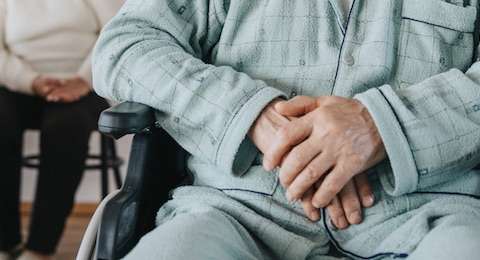
A stroke is a medically urgent situation that prevents a fraction of your brain from receiving the oxygen- and nutrient-rich blood it requires. More purposely, stroke affects the arteries that transmit blood to and inside your...
A stroke is a medically urgent situation that prevents a fraction of your brain from receiving the oxygen- and nutrient-rich blood it requires. More purposely, stroke affects the arteries that transmit blood to and inside your brain. A stroke can have overwhelming consequences, together with disability and even passing away. Accepting what happens for the duration of a stroke can facilitate you categorize the signs and symptoms that you or someone you are with is having a stroke - and the prior you seek treatment, the healthier the conclusion may be.
Stroke is one of the leading causes of death in the world, according to the Medical Association. It is also a foremost reason for disability in the world. As per the research or surveys conducts, every year, more than 7, 95,000 people from the whole population suffer a stroke. About one in four strokes are in people who have had an earlier stroke.
In wide-ranging, a stroke disrupts the flow of blood to the brain, which prevents brain cells and tissue from receiving the oxygen and nutrients they require to utility and survive. Even a short break of oxygen-rich blood can smash up brain cells. Going without oxygen for minutes to hours can show the way to the death of brain cells and tissue.
Effects of a Stroke
The human brain is extremely multifaceted, with each area of the brain being accountable for specific functions all through the rest of the body. Harm to any area of the brain can be a reason for the loss of standard function in the allied part of the body.
The effects of a stroke can vary extensively depending on the kind, sternness, the number of strokes the patient has had, and where blood loss occurs in the brain.
The brain features three main areas:
1. Cerebrum - fills up most of the skull, and is accountable for detection, problem-solving, thinking, feeling, and association.
2. Cerebellum - situated at the back of your head, beneath your cerebrum; controls synchronization and balance.
3. Brainstem - sits at the pedestal of the brain and controls routine functions, such as inhalation, digestion, blood pressure, and heart rate.
The effects of a stroke may also diverge depending on which side of the cerebrum, or hemisphere, they take place. Each hemisphere controls dissimilar actions, so a stroke in the left hemisphere may be a source of different effects than one in the right hemisphere. Additionally, the right side of the brain also controls many proceedings on the left side of the body and vice versa, so a stroke on the left hemisphere may cause harm on the right side of the body.
A right hemisphere stroke in the cerebrum can be a particular reason behind the left-sided weakness or paralysis, troubles with vision, depth insight and memory, complexity using everyday objects, and behavioral changes.
Effects of a left hemisphere stroke comprise weakness or paralysis on the right side of the body, problems with speech, reminiscence understanding language, vision, and reading, along with impaired capability to systematize or analyze things, and behavioral changes.
Doctors can perceive stroke using imaging that generates pictures of the brain and any bleeding within it. Imaging may comprise computed tomography (CT) and magnetic resonance imaging (MRI). This imaging helps doctors analyze stroke, conclude its position and severity, envisage its effects, and create a modified treatment plan that helps patients trounce the effects of what happens during a stroke.















